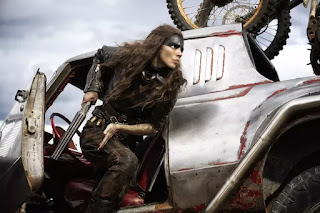Gertrude Ederle, the first woman to swim the English Channel, died in 2003 at the age of 98. Ederle's obituary in The New York Times included this defining sentence, "her feat, which she did only once and under horrendous conditions, made a memorable contribution in an age when many found it difficult to take female athletes seriously."
After an initial flood of attention, Ederle failed to "sustain the lofty place in history of another hero of the 1920s, Charles A. Lindbergh," the Times article also noted.
Put succinctly, Ederle did not become an enduring household name.
A new movie, Young Woman and the Sea, tries to redress that slight with a biopic that underscores the difficulties Ederle faced because of prejudice against women athletes, in part due to backlash from the 19th Amendment, which granted women the right to vote in 1920.
Director Joachim Ronning (Pirates of the Caribbean: Dead Men Tell No Tales) brings a spirit of female empowerment to a conventionally told story that stars Daisy Ridley, best known for her Star Wars work, as "Trudy" Ederle,
A childhood bout with measles impaired Ederle's hearing. Her mother (Jeanette Hain) had to overcome resistance to involve her daughter in organized swimming. After a steamboat accident claimed many lives, the elder Ederle insisted that her daughters learn to swim — or so the movie has it. An eager Trudy didn't take much convincing.
Ederle's father, a German-immigrant butcher played by Kim Bodnia upheld traditional Old-World values, hoping his daughters would agree to arranged marriages.
Ederle's inauspicious beginnings built toward triumph with an appearance in the 1924 Olympics, where she won a gold medal in the 400-meter freestyle relay. She quickly decided to add the English Channel to her expanding resume.
A by-the-numbers approach to Ederle's story is augmented by performances from Hain as Ederle's stern, determined mother, and Tina Cobham-Hervey, as Ederle's sister and confidant.
Additional cast includes Sian Clifford as Lottie Epstein, Ederle's first coach and swimming instructor, Christopher Eccleston as the bigoted coach who sabotaged her first attempt to swim the Channel, and Stephen Graham as the colorful male Channel swimmer who took charge of the boat that guided Ederle in her Channel swim.
Ridley shows plenty of pluck, but the actors are all constrained by the point-blank quality of the writing, which focuses more on the inspirational qualities of Ederle's story than on any deep probing.
Some of the movie's details -- the invention of a two-piece bathing suit, for example -- add interest, as does a warm-up swim she made from New York to New Jersey. Ederle also seems to have been obsessed with the 1921 song, Ain't We Got Fun.
Cinematographer Oscar Faura reportedly filmed in open Black Sea waters, a decision that enhances the swimming scenes. Anyone who has battled waves and undercurrents knows how arduous ocean swimming can be.
Ederle's plunge through a sea of jellyfish and the nighttime disorientation she felt while tackling shallows off the Dover coast create tension, but the movie mostly functions as a belated ticker-tape parade to a self-assured, odds-defying woman.
Before the closing credits, you'll see poignant black-and-white footage of the real Ederle and the real New York City ticker-tape parade she received --reminders of a now-faded moment of national celebration and exuberance.
Young Woman and the Sea blends old-fashioned style and inspirational ambition in ways that may connect with audiences or, at minimum, introduce them to a neglected bit of popular history. Maybe that's enough.








